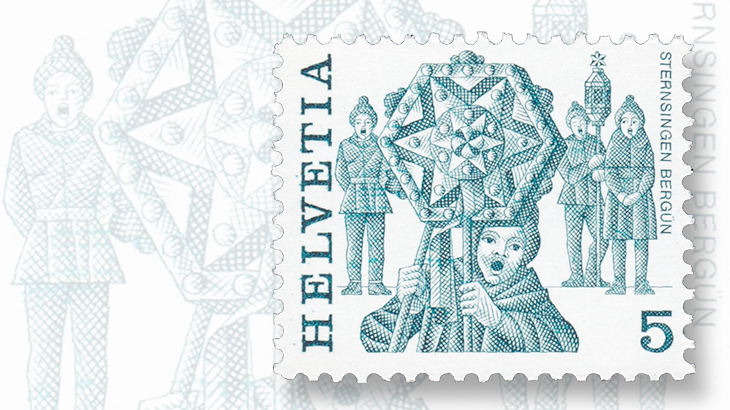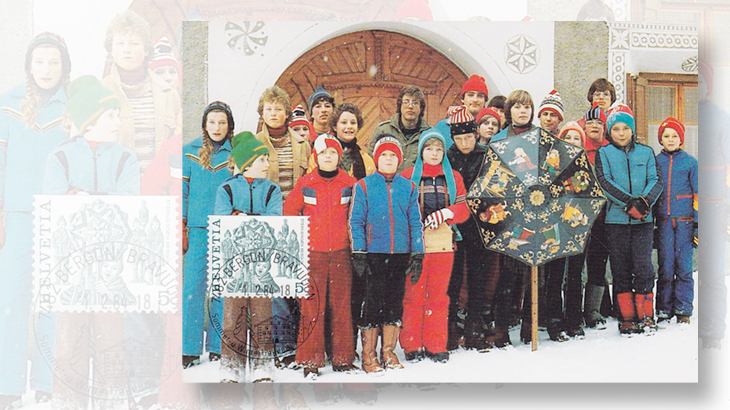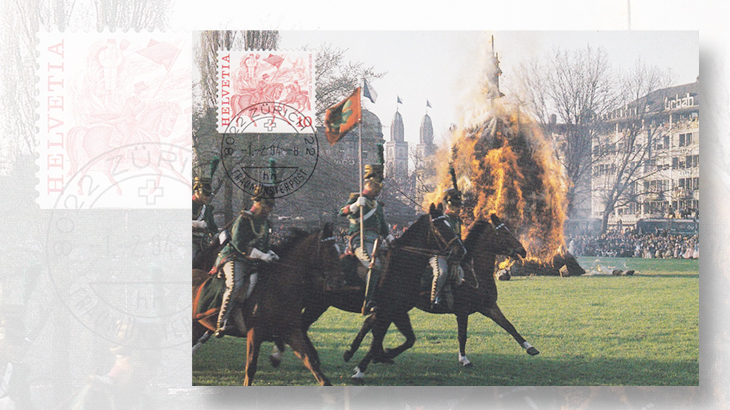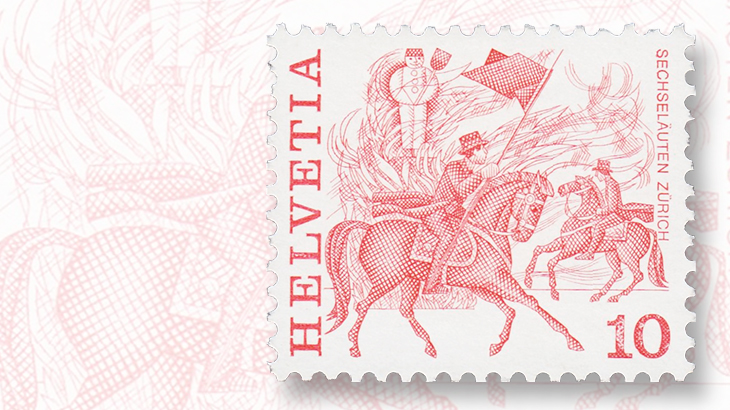World Stamps
Rich traditions of Swiss folk festivals highlighted on stamps
By Richard T. Hall
Switzerland has a rich tradition of local, regional, and national folk festivals. Let’s look at some of these that have been illustrated on Swiss stamps.
We will begin with the Folk Customs definitive stamp set issued in 1977, with additional denominations in 1982 and 1984. The stamps were designed by Solange Moser (1922-2001) and engraved by Pierre Schopfer [(1943- ); 5 centimes, 10c, 20c, 25c, 35c, 45c, 50c, 60c, and 80c denominations] and Heinrich Heusser [(1905-79); 30c, 40c, 70c, and 90c stamps].
Connect with Linn’s Stamp News:
Sign up for our newsletter
Like us on Facebook
Follow us on Twitter
It is interesting to note that Heusser did not live to see the 30c stamp appear; he died three years before it was issued in 1982. The postal service must have had additional designs in the bank to cover anticipated postal rate changes. The names of these various folk festivals are often in the local dialect, making them difficult for a non-Swiss to translate, let alone pronounce.
Carol singing takes place in Catholic areas of the canton of Graubunden in southeast Switzerland around the time of the Epiphany. The 5c stamp of the set (Scott 632), issued in 1977, illustrates a version of this activity, Sternsingen or Star singing, which is celebrated in the village of Berguun in the Abula valley.
The stamp shows a group of children, one of whom is holding an illuminated star (the “Stern”) decorated with Christian symbols that can be rotated by a crank. A maximum card shows a contemporary version of the celebration, with the star apparently created from an umbrella.
The 10c denomination (Scott 633) shows the Zurich festival of Sechselauten, which takes its name from the bell that is rung at 6 p.m. on the Monday following the vernal equinox to mark the transition from winter to summer. On that day, the various guilds of Zurich don their historic costumes and parade through the city to a large public square, where a “Boogg” has been erected atop a large pile of wood.
The “Boogg” is a snowman, complete with a hat and broom, made of wood and whose belly has been filled with explosives. The pyre is lit, and the guild members gallop around the pyre until the belly explodes to the cheers of the onlookers. The sooner the belly explodes, the sooner winter will end, the tradition says. The maximum card shows the pyre and the galloping horses. The twin spires of the Fraumunster can be seen in the background.
The 20c stamp (Scott 634) shows an Appenzell tradition, Silversterklause, which dates ...
Want to see and read about the various other Swiss festivals on these stamps?
Richard T. Hall provides a detailed look at the widespread festivals that are deeply entrenched in Swiss culture. The content can be found in the Aug. 21 issue of Linn's Stamp News monthly magazine. If you would like to read more, subscribing to either the print or digital edition of Linn's is easy and fast.
MORE RELATED ARTICLES
Headlines
-
US Stamps
Oct 7, 2024, 12 PMVasiliauskas named president of Mystic Stamp Co.
-
US Stamps
Oct 6, 2024, 5 PMApgar souvenir card available
-
US Stamps
Oct 6, 2024, 4 PMFirst Continental Congress and U.N. stamps receive Scott catalog numbers
-
World Stamps
Oct 5, 2024, 1 PMCanada Post continues Truth and Reconciliation series











